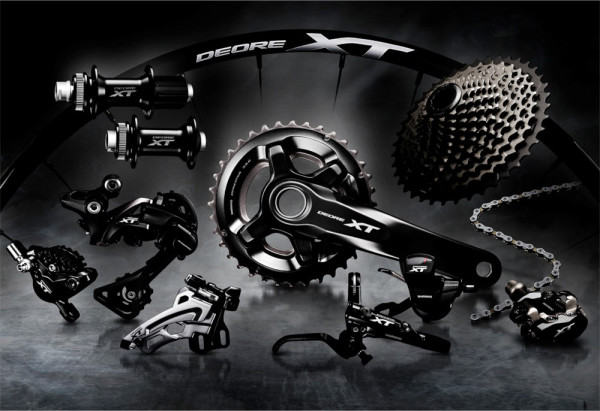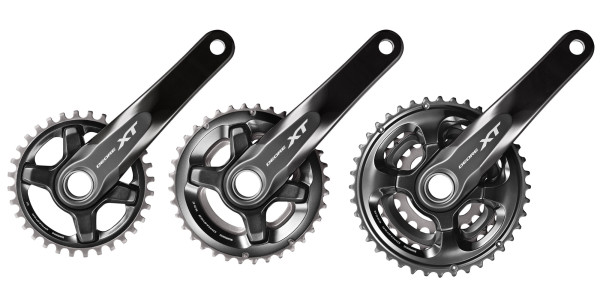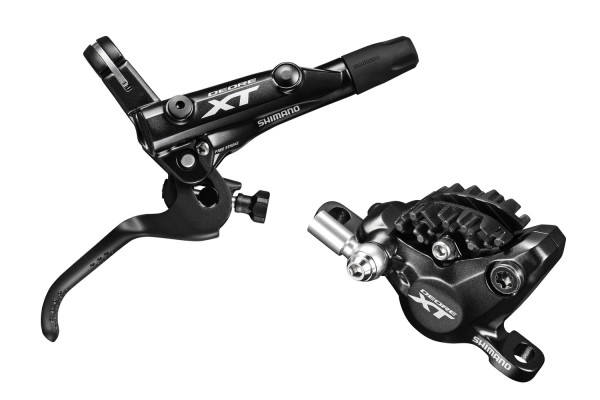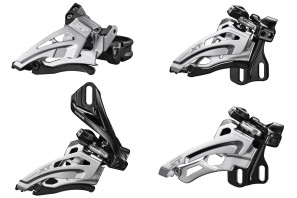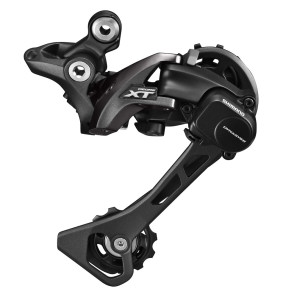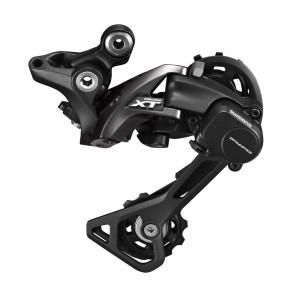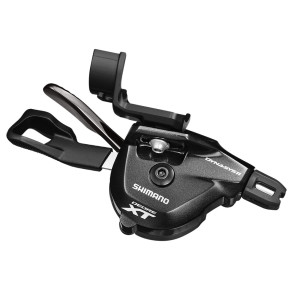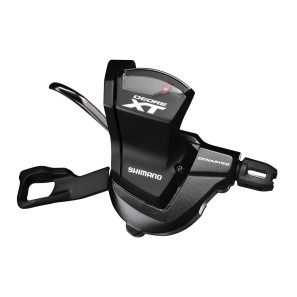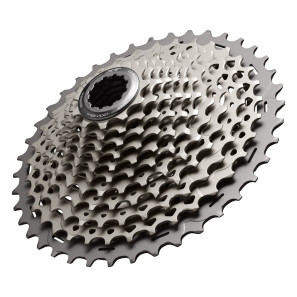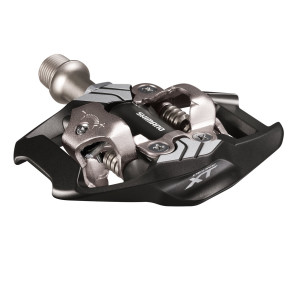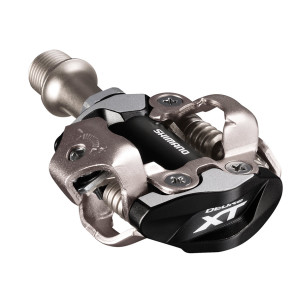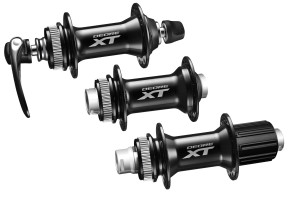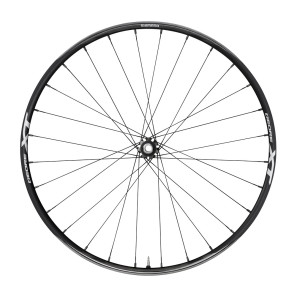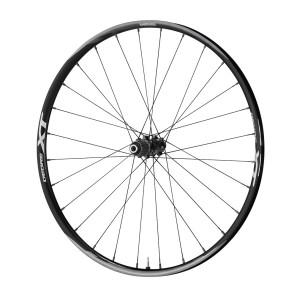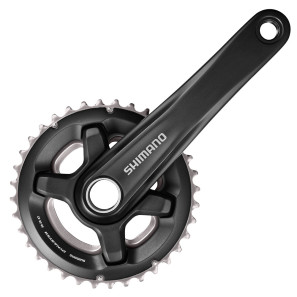Lots of new shiny parts today as Shimano has updated its workhorse Deore XT groupset to the same new 11-speed standard we’ve seen in the current XTR group. Plenty of tech makes its way into the new 8000 group, while still keeping the Trail and Race options that have helped make these upper level Shimano groups successful even as mountain biking specializes itself. Like XTR, the new XT offers 1×11, 2×11, and 3×11 setups with Shimano’s Rhythm Step progression aimed at keeping gearing steps smooth and consistent to maintain ideal pedaling cadence.
Shift past the break for all the trickle-down update details, new crank spindle options and expected availabilities…
The single, double, and triple ring cranks come in what Shimano calls Rider Tuned options, meaning each one is targeted at a separate mountain biking demographic from cross country to enduro and feature the same atypical four-bolt spacing as the XTR cranks. Single ring cranks will be available at the end of the summer in 30 or 34 tooth options, with the same extended hooked tooth profiles of XTR 1×11 rings. The Trail doubles are available with either 34/24, 36/26, or 38/28 tooth rings, while the triple has a 40/30/22 spread. In addition to these standard options, the 36/26 and 32 single cranks are available in wider 148 OLD-specific options.
Shimano’s benchmark XT brakes get an upgrade, claiming to drop weight and add a more durable master cylinder design. With a refined short lever pull and an updated slimmed-down clamp should also take up a bit less space on the bar, freeing up some more space for better adjustability.
Both front and rear derailleurs get big makeovers. XT gets Side Swing on all of the direct mount options for double or triple setups with bigger travel bikes in mind. Both mid and long cage XT derailleurs will only be offered with Shimano’s Shadow RD+ clutch for excellent and adjustable chain retention. Derailleur pulleys have been updated and include taller teeth for better shifting and smoother function when cross-chained. All of the derailleurs get optimized cable routing and improved pivot geometry that is said to drastically reduce shifting effort across the board.
Shifters get an update for a claimed 20% lower shift effort with a long sweep lever. The 2-way multi release that came from XTR lets the rider drop shifts with either the thumb or index finger, something that is surprisingly convenient when moving your hands around on the bar. The new shifters are available with standard band clamps, the new XT/XTR I-SpecII or the older I-Spec for close to universal compatibility.
Gear ratios are a big asset, with the new XT cassette available as either a 11-40 or 11-42, the widest range Shimano has ever made. This gives a couple more teeth than the comparable XTR cassette offering a bit more versatility, versus the more race and cadence-oriented XTR.
The new pedals both get wider platforms, an increase of 3.3mm for the Trail version and 2.8mm for the Race version. They also shrink 0.5mm in height. Small gains, but welcome, they amount to a 12% boost in shoe contact on the Trail and 8% for the Race versions.
Separate hubs get mostly carry-over tech, simply rebranded to match the group and come in all varieties. Wheels have come down in weight a little bit, knocking about 40g off each wheel size, while getting wider. The Trail wheels get 24mm internal widths and the Race get 20mm inside for their wider tubeless-ready aluminum rims. Both wheelsets are offered in 27.5″ and 29″, come with thru-axles, and are built up with 28 3x straight-pull spokes front and rear on offset flange hubs.
Availability for all the new XT components is generally June, with a few items expected a month or so later like the bigger 11-42 cassette, the single and triple ring cranks, and the Trail wheelsets. No word on pricing yet, but Shimano is having a launch event tonight in Monterey leading in to Sea Otter, and we’ll see what else we can find out.
On the other stuff front, Shimano added a new non-series crankset that offers 11-speed compatibility with the XT and XTR groups but at a much lower price point. The MT700 crank still uses Hollowtech II forging and the same non-symmetrical (at least not-radially) 70° bolt spacing as the higher-end cranks. In theory this again could be seen as a step towards more affordable replacement rings since Shimano is moving away from industry standard BCDs. The crankset will only be available in a 36/26 toothed double.
Less flashy, but useful for those looking for 148 OLD compatibility, Shimano also announced a new single ring XTR 9000 crankset in a ‘B’ option with an extra 3mm wider chainline for better shifting with the wider hub spacing. Lastly there are a couple of new E-thru-axle variants (78 and 58) that have a hollow aluminum axle for 12mm rear hubs.
